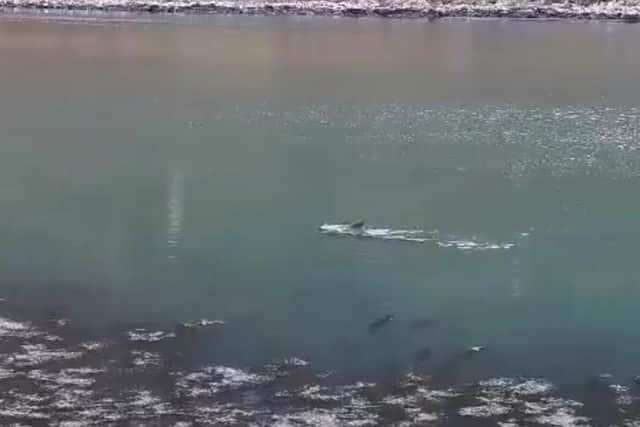Long-finned pilot whale euthanised after stranding in Outer Hebrides
Posting on its Facebook page, the British Divers Marine Life Rescue (BDMLR) Outer Hebrides shared the sad news, writing: “It is with great sadness that the team can confirm that ‘BunaDon-Piley’, the long-finned pilot whale, was euthanised by a vet yesterday afternoon.
“On Friday, BunaDon-Piley was found late afternoon in a quicksand area of the Seilbost estuary/beach. With the rising tide we were unable to safely get the team across, even with coastguard assistance.
Advertisement
Hide AdAdvertisement
Hide Ad“The decision was made to reassess again at first light, as Bunadon-Piley appeared to disappear at that point back into the incoming tide. Five qualified marine mammal medics made their way to Seilibost early in the morning and were initially unable to find the pilot whale, despite scouring around all local beaches of Luskentyre, Seilebost, Nisabost and Horgabost.


“We had hoped he had managed to find his way out to open water. However, by chance as the tide was going out, one of the medics caught a glimpse of Bunadon-Piley, who was seen far inland at Fincastle/Seilibost, near the Borve fishery.
“Here, the medics were able to get a good look at Bunadon-Piley – and we could see this mammal would clearly not survive the oncoming stranding. We utilised this time to make the decision across all agenices that it was in the best interest of this animal to have him quickly and humanly euthanised once he stranded on the low tide. This was then arranged and carried out.”
Despite its common name, the long-finned pilot whale is actually a large species of dolphin.
As their name suggests, they have two very long flippers. The animals have a thick-set, curved and very prominent dorsal fin. The head of the long-finned pilot whale is bulbous with no beak.
These beautiful creatures live throughout the cold and temperate waters of the southern hemisphere and in the North Atlantic Ocean, but have a wide distribution around the globe.
They prefer deep offshore environments, but do occur in coastal waters in some areas.
A message from the Editor:
Thank you for reading this article. We're more reliant on your support than ever as the shift in consumer habits brought about by coronavirus impacts our advertisers.
If you haven't already, please consider supporting our trusted, fact-checked journalism by taking out a digital subscription.
Comments
Want to join the conversation? Please or to comment on this article.